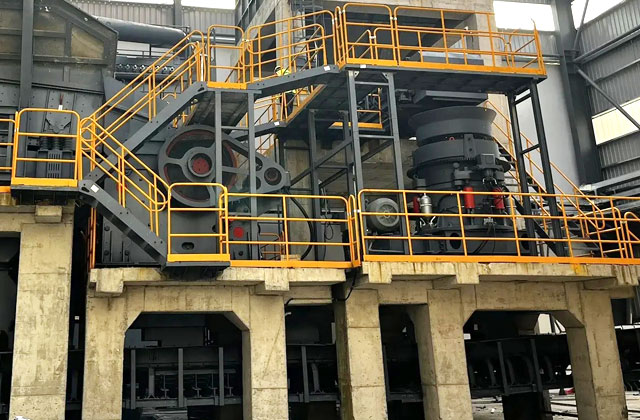Iron ore is a key raw material in the production of steel, and its extraction and processing involve the use of various types of crushers. Each crusher type has its specific role in reducing the size of ore particles, making them easier to transport, handle, and process. Here’s an overview of the main types of crushers used in iron ore processing.

- Jaw Crushers
Jaw crushers are typically used as primary crushers in iron ore processing. These crushers consist of two plates, one fixed and one moving, which compress large ore pieces between them to break them down into smaller, more manageable chunks. Jaw crushers are favored for their high capacity and efficiency in crushing hard and abrasive materials like iron ore. They also offer consistent reduction ratios, making them a good choice for the initial stage of ore reduction. - Gyratory Crushers
Similar to jaw crushers, gyratory crushers are used for primary crushing but are more suitable for larger-scale operations. These crushers use a rotating cone inside a cylindrical chamber, which applies continuous pressure to crush the ore into smaller pieces. Gyratory crushers are often used in mining sites with high ore volumes, as they can process large quantities of material at once, offering both efficiency and durability. Their robust design makes them ideal for tough applications like iron ore crushing. - Cone Crushers
Cone crushers are commonly used in secondary or tertiary crushing stages in iron ore processing. These crushers utilize a rotating cone within a concave surface to break down the ore further. Cone crushers provide finer crushing, which is ideal for preparing the ore for subsequent grinding or other processing steps. They are known for their ability to produce uniform particle sizes and can handle a range of ore hardness, making them a versatile choice for iron ore operations. - Impact Crushers
Impact crushers, including horizontal shaft impactors (HSIs) and vertical shaft impactors (VSIs), are sometimes used in iron ore processing, particularly when the material is softer or more friable. These crushers work by striking the ore with high-speed rotating hammers or bars, which cause the material to shatter upon impact. Although impact crushers may not be as commonly used for iron ore as other types, they can be effective in producing fine material or specific aggregate sizes for certain applications. - Roll Crushers
Roll crushers, though less frequently used, can be effective for reducing iron ore to smaller sizes. These crushers feature two rotating cylinders that crush the ore between them as the cylinders rotate in opposite directions. Roll crushers are often used for processing softer ores or in applications where precise size control is important. Their low maintenance requirements and ability to handle moisture-rich ores make them suitable for specific iron ore crushing operations.
In summary, the choice of crusher for iron ore depends on the stage of processing and the desired final product size. Jaw and gyratory crushers are preferred for primary crushing, while cone and impact crushers are more suited for secondary and tertiary stages. Each crusher type plays a crucial role in optimizing the extraction and processing of iron ore.

